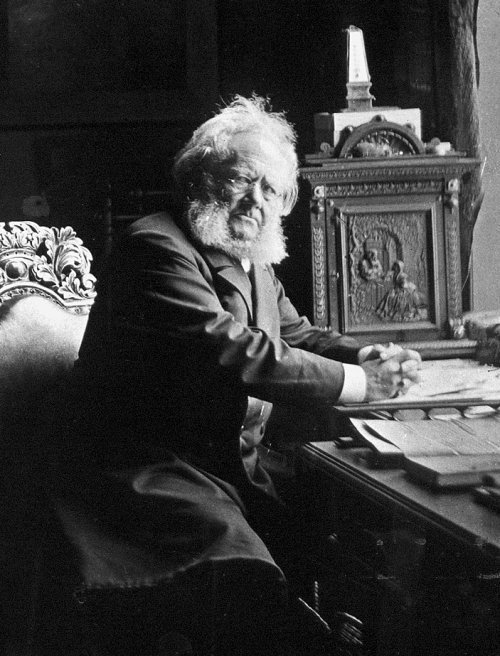Henrik Ibsen, often called the father of modern drama, was born on March 20, 1828. Among his most acclaimed plays are A Doll’s House, originally titled A Doll House (1879), Hedda Gabler (1890), Ghosts (1881), The Wild Duck (1884), and An Enemy of the People (1882). Ibsen was born in Skien, Norway, a small town that, while not entirely rural, like in An Enemy of the People, still had a close-knit and conservative atmosphere. His formal education ended at fifteen when financial struggles forced him to work, leading him to an apprenticeship and later a position as a pharmacist's assistant. This early exposure to medicine and health-related issues gave Ibsen an early understanding of science, authority, and public health—resulting in key themes in An Enemy of the People. Though he aspired to become a physician, which Dr. Stockman is in the play, he studied for the matriculation exam, the university entrance exam taken by students who wanted to pursue higher education, but failed in Greek and mathematics, preventing him from formally enrolling, though he continued to audit classes.
Ibsen's early years as a writer were marked by hardship; his first play, Catiline, was published with the help of his friend Schulerud, but barely any copies were sold. In a moment reminiscent of Dr. Stockmann's struggles before what we see in An Enemy of the People and begin to see in Act Three, Ibsen and Schulerud were so impoverished that they had to sell the remaining copies as scrap paper just to afford food. For years, Ibsen lived in poverty until he was hired as a dramatic author in 1851 and later became the artistic director of the Norwegian Theater in 1857.

Like Dr. Stockmann, Ibsen knew what it meant to face public rejection and financial hardship due to unpopular ideas. Ibsen's views often clashed with societal norms, and his work frequently challenged ingrained beliefs. His play Ghosts, written before An Enemy of the People, was met with intense backlash for addressing taboo topics like religious hypocrisy, societal hypocrisy, unconventional family dynamics, and sexually transmitted diseases.4 Arthur Miller stated he had heard Ibsen was “practically stoned off the stage for daring to present Ghosts.”5 Prior to Ghosts, Ibsen’s works confronted established ideas, but never to this extreme. Like Dr.Stockmann in Act One of An Enemy of the People, Ibsen was more reserved with his progressive views, though he always held known advocacy-driven beliefs. His most famous work, A Doll’s House, critiques societal norms in a subtle, domestic setting, while Ghosts takes those critiques to a much darker and more extreme level.
With frustration toward the public's response to Ghosts, Ibsen channeled his anger into An Enemy of the People, creating a protagonist, Dr. Stockmann, who, like himself, was vilified for speaking the truth. According to the revered Ibsen scholar Evert Sprinchorn: “For the corruption and graft in a charity...Ibsen substituted the polluted waters at a Norwegian spa. He may have read or heard of a doctor at the spa in Teplitz in Bohemia [Germany], who in 1831 ordered the baths be closed when a cholera epidemic broke out.”

Looking at the life of Ibsen, it is clear that his personal struggles with authority, public health, and public perception profoundly shaped his writing within An Enemy of the People, making this play not just a critique of society but Ibsen's personal response to being rejected for challenging the status quo.
The strongest man in the world is he who stands most alone.
— Henrik Ibsen, An Enemy of the People